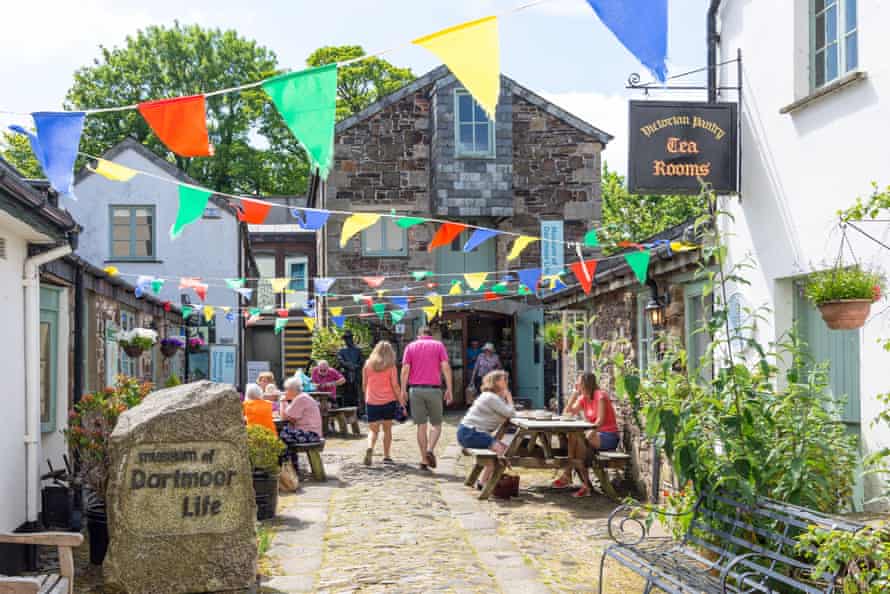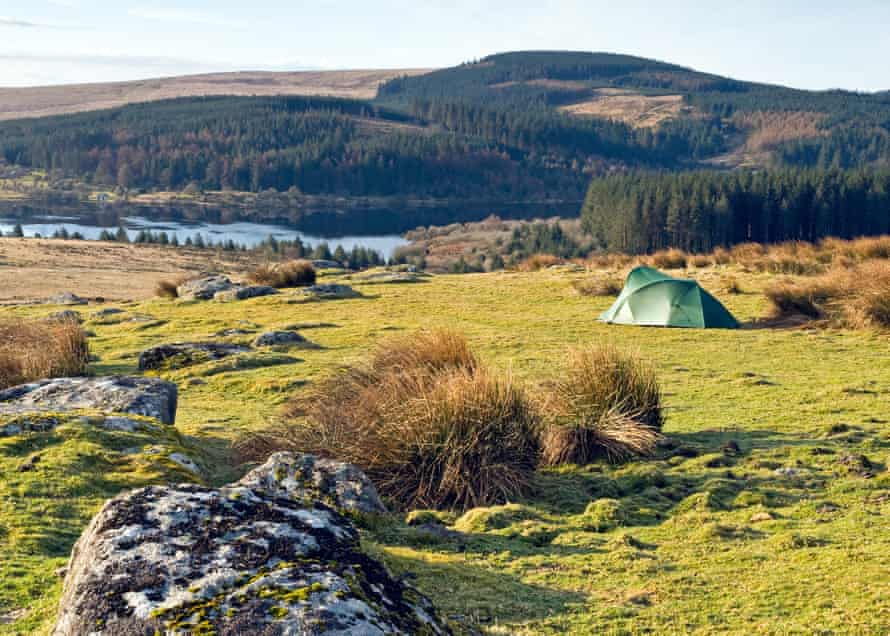Many are the legends of lost walkers tricked by swirling mists, pixies or ghosts on the northern edge of Dartmoor, one of Devon’s more isolated corners. In the 18th century, when stage coaches rattled over rough tracks, it was a harsh and dangerous place to travel. There is still a sense of remoteness – this is where the Atlantic winds arrive unhindered, and it is at once bleak and bracing, dramatic and drear. But if you haven’t got wheels, it has been harder to reach in recent times than it was for generations past.
That is set to change on 20 November, when the Dartmoor Line will reopen almost 50 years after it was axed. Now local shoppers and workers, as well as walkers and climbers, cyclists and campers, will be able to travel from anywhere in the UK, via Exeter, and reach the top of Dartmoor easily and without driving. The £40.5 million line, the first to be reinstated as part of the Department for Transport’s “Restoring your Railway” initiative, is a significant national moment as well as great news for the tourism-reliant south-west.

Stations at Ivybridge and Totnes have opened up the east and south moor. The new line to Okehampton – described by one campaigner as an “oasis in a rail desert” – could be a boon for the north moor as well as parts of Cornwall. It will also take some traffic off the often jammed A30.
Locals campaigned for the reopening for more than two decades, working alongside councillors, railway experts and Great Western Railway, even running three special “protest” trains from Okehampton to Paddington, Stratford-upon-Avon and Weymouth to force the government’s hand.
When it opened in October 1871, the 15.5-mile line from Exeter was the initial stage in a series of two major railway extensions that continued west to Launceston in Cornwall and, in 1890, down to Tavistock and Plymouth via the Tamar valley. Though not scheduled to close as part of the initial Beeching cuts of the 1960s, the last regular train ran back in 1972. A Sunday service operated in the summer months from the late 1990s but the line was largely for transporting – ironically enough – railway ballast from Meldon Quarry.
West Devonians are still calling for a restoration of the complete route down to Plymouth, their case strengthened in 2014 when a storm destroyed the GWR tracks at Dawlish. For now, though, we’ll have to make do with the new line, which will make the journey from Exeter to Okehampton in 40 minutes with a single stop at the tiny bishopric of Crediton along the way. Trains will run every two hours (hourly from 2022).

Often overlooked, Okehampton is a likable enough market town that’s home to the Museum of Dartmoor Life, retelling the region’s history from the Mesolithic to post-industrial times, and an excellent YHA hostel that occupies an old railway goods shed. Over the winter, its Victorian station will be refurbished, the cafe restored, and there are plans for a Dartmoor national park visitor centre next year.
With the town centre just 20 minutes’ walk from the northern border of Dartmoor national park, Okehampton is pitching itself as the “gateway to the moor” and is likely to be a popular base for those setting off on walks. Just west of the town is Meldon Viaduct, a popular place to start ascents of High Willhays and Yes Tor, the highest points on Dartmoor.
Twelve miles southeast lies Chagford, a lively former stannary (tin-mining) town inside the national park. Arts and crafts studios, vegan cafes and jazz nights make it a sort of Totnes of the top of the moor, and there are plenty of cottages and inns offering B&B. It’s a fair, but pleasant, walk and the 178 bus runs once daily (except Sundays) between Okehampton and Chagford. There are lovely woods and riverside footpaths around the town.
Each region of Dartmoor has its own character. The north and northwestern moors generally feel more open and exposed, and while there is plenty of good walking, the uplands can be Baskerville-level boggy. The presence of the MoD and its firing ranges can be a pain if war games coincide with your planned visit – but they’re not that common and usually military activity is restricted to one of three areas (firing and other military exercises are flagged up in advance online.
A major upside is that Dartmoor is the only area in England that currently explicitly permits wild camping. For domestic tourists keen to reduce their carbon footprint, a train ticket and a tent are all they need to escape to the wilds of the far north.
The best options for walks and rides from the new line

Circular walk from Okehampton
From Okehampton follow the road to the Battle Camp – just inside the moor – to do a popular circular five- or six-mile walk around West Mill Tor, Rowtor, Scarey Tor and Tors End, returning via the quaint Tors Inn at Belstone.
Granite Way
The mainly traffic-free 11-mile Granite Way cycle route runs between the station and Lydford. You can rent bikes and e-bikes at Granite Way Cycles on Klondyke Road.
Two summits
The 10-mile climb from either Okehampton or Meldon Viaduct up to the two highest points on Dartmoor – High Willhays and Yes Tor – is easy enough so long as it’s not lashing down. The name of High Willhays, recorded as “High Willies” and “High Willows” in some old documents, might de derived from Welsh “gwylfa” for “watching place” – suggesting it might have been a lookout for beacon fires. Its summit is not of the dramatic, pointed kind but at 621 metres above sea level, it is often wind-lashed and wet.
Okehampton to Buckfastleigh

It’s a serious-sounding 26 miles between these two small towns, but the terrain is varied and rarely tough going, and there are excellent places to camp en route, including beside the Grimspound stone hut circles or in the woodlands and gorse patches on the eastern slope of Hameldown. This last is a majestic humpback hill with fine views in all directions. Buckfastleigh is served by the touristy South Devon Railway, which links up with Totnes for mainline trains.
Cross Dartmoor
The 37-mile West Devon Way between Okehampton and Plymouth is a good option for those who come by bus or train: each of the eight stages starts and stops at a bus stop.
Two Moors Way
Passing smack-bang between Okehampton and Crediton, the Two Moors Way involves a 10-mile “walk in” or a taxi. The 102-mile coast-to-coast footpath, from Lynton in north Devon to Wembury near Plymouth, spans Exmoor and Dartmoor; ultra runners can complete the journey in a single day. Sustrans’ 99-mile Coast to Coast route, between Ilfracombe and Plymouth, is the equivalent for cyclists.
Loop the loop
The 95-mile Dartmoor Way, which passes through Okehampton, loops round the park on lanes and minor roads, ideal for cycling and e-bikes. It can be used for day trips or for a full five-to-seven day holiday. A parallel 108-mile route is used by walkers.
Note on navigating
Large areas of Dartmoor are featureless, mists are common and sudden, and there are morasses all over. The double-sided Ordnance Survey OL28 map covers almost the entirety of the national park at 1: 25,000 scale, ideal for walkers
BMC XT40, a single 1:40,000 scale map showing the whole of Dartmoor, is suitable for general planning or easy, short walks on well-used paths.
Tickets from Exeter to Okehampton cost £8 return, for information and tickets visit Dartmoorline.com



